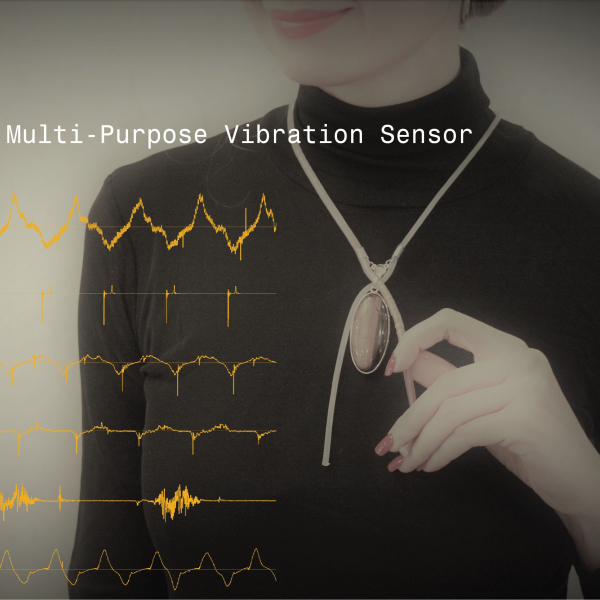Current Projects
Learn more about the ongoing research in the lab!
ZEUSSS Wireless, Self Sustaining Acoustic Sensor
Physical surfaces and objects enhanced with acoustic sensing and communication capabilities provide an opportunity for an unprecedented understanding of human behavior as well as novel ways of interaction and environmental control. Combined with the advances in material science and additive manufacturing techniques, we attempt to "weave" acoustic sensing and computational capabilities into everyday objects. ZEUSSS, the Zero Energy Ubiquitous Sound Sensing Surface, allows physical objects and surfaces to be instrumented with a thin, self-sustainable material, giving rise to revolutionary applications such as interactive walls, localization of sound sources and people, surveillance via audio, contextualization and safer authentication services.
Active Team: Nivedita Arora, Qiuyue Xue, Jin Yu, Ryan Bahr, Ali Mirzazadeh
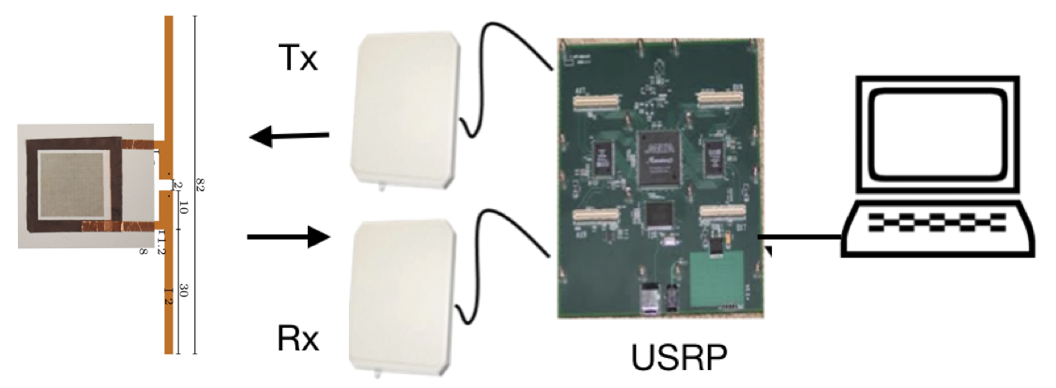
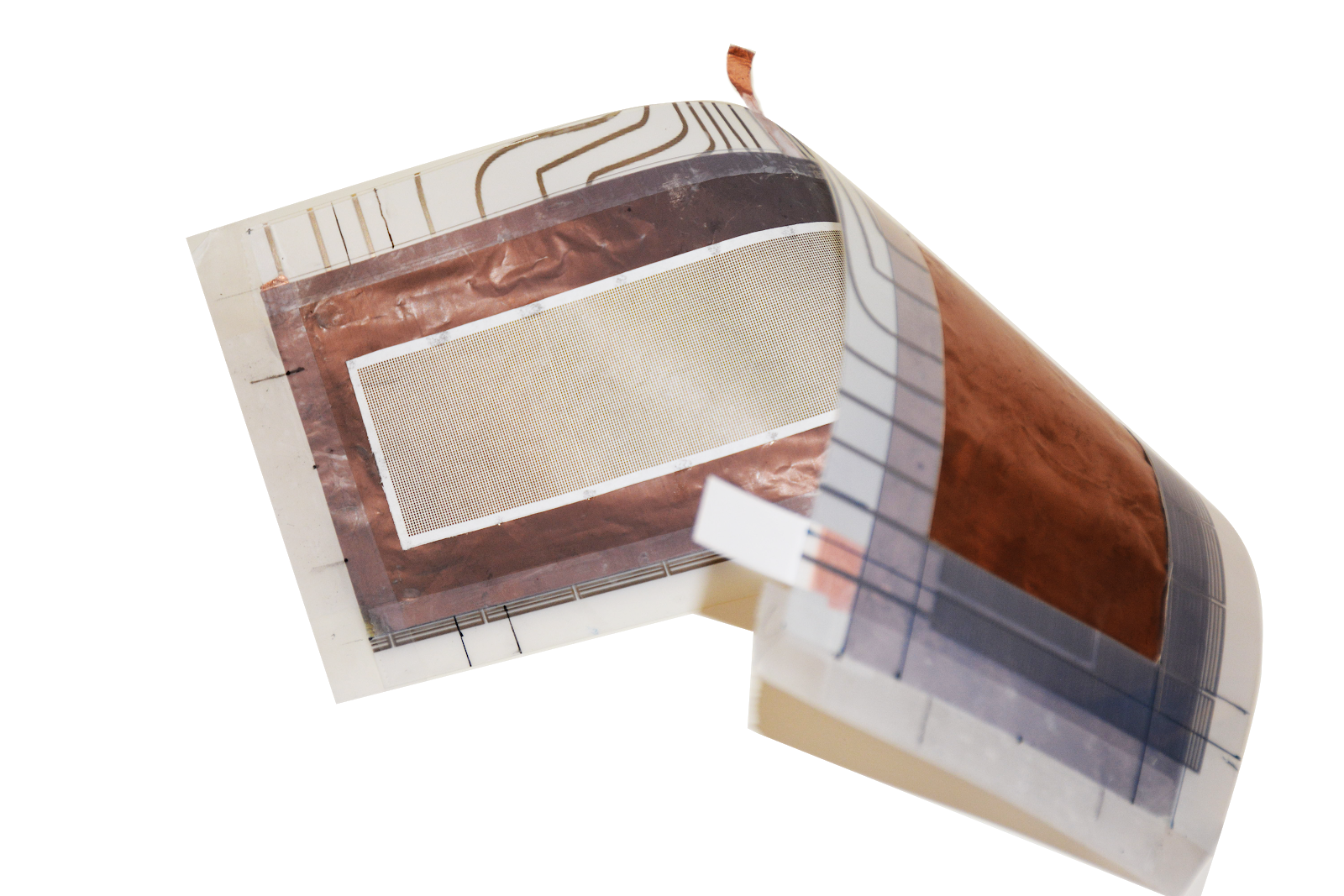
OptoSense Towards Ubiquitous Self-powered Optical Sensing Surfaces
Ubiquitous computing requires robust and sustainable sensing techniques to detect users for explicit and implicit inputs. Existing solutions with cameras can be privacy-invasive. Battery-powered sensors require user maintenance, preventing practical ubiquitous sensor deployment. We present OptoSense, a general-purpose self-powered sensing system which senses ambient light at the surface level of everyday objects as a high-fidelity signal to infer user activities and interactions. To situate the novelty of OptoSense among prior work and highlight the generalizability of the approach, we propose a design framework of ambient light sensing surfaces, enabling implicit activity sensing and explicit interactions in a wide range of use cases with varying sensing dimensions (0D, 1D, 2D), fields of view (wide, narrow), and perspectives (egocentric, allocentric). OptoSense supports this framework through example applications ranging from object use and indoor traffic detection, to liquid sensing and multitouch input. Additionally, the system can achieve high detection accuracy while being self-powered by ambient light. On-going improvements that replace Optosense's silicon-based sensors with organic semiconductors (OSCs) enable devices that are ultra-thin, flexible, and cost effective to scale.
Active Team: Dingtian Zhang, Yang Zhang, Jung Wook Park, Yuhui Zhao, Yunzhi Li
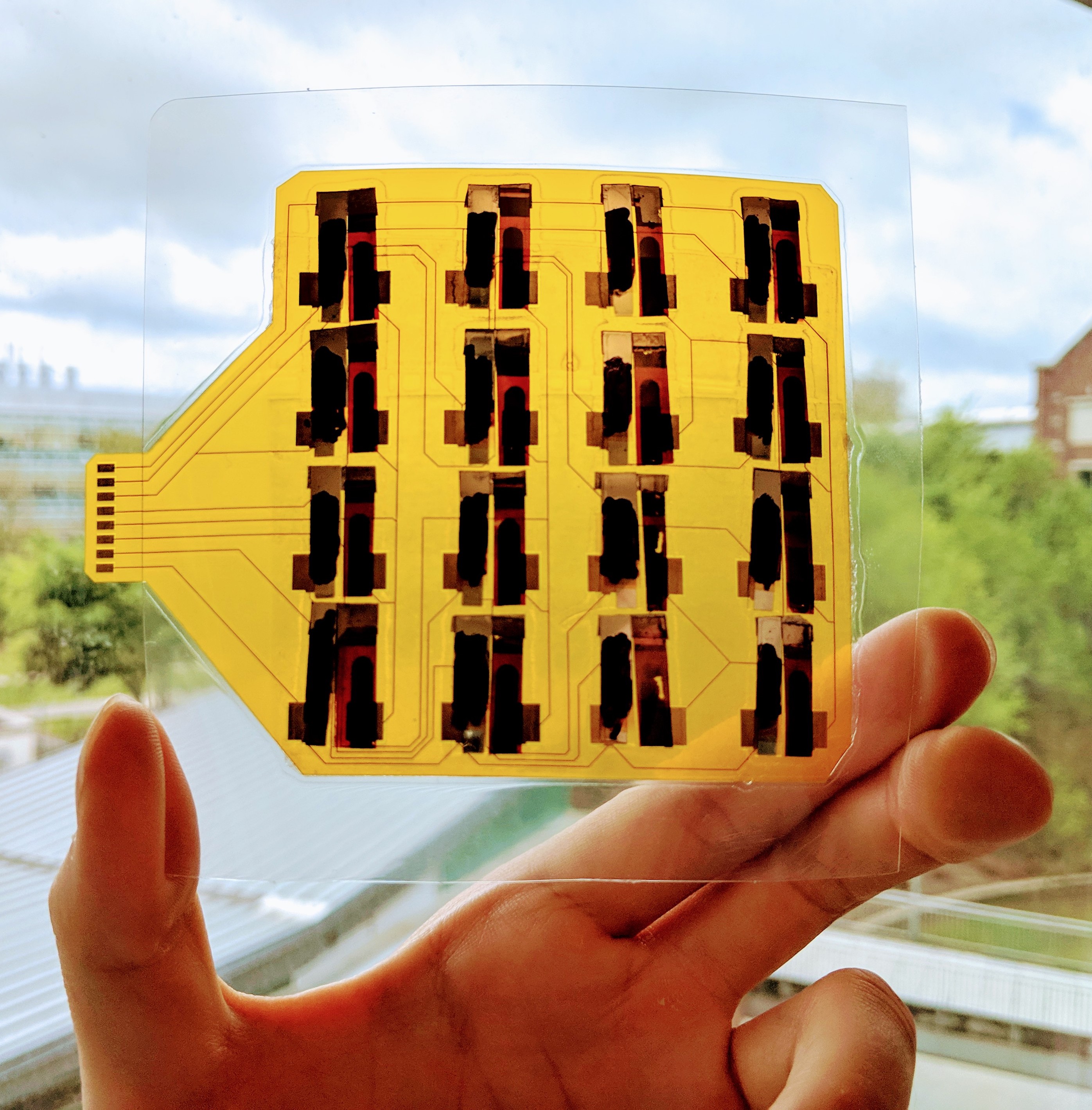
RF Energy Harvester Harvesting Energy From Ubiquitous Signals
The work aims to create an RF (radio frequency) electromagnetic energy harvesting solution which harvests energy from the FM (frequency modulation) broadcasting band and is intended for powering small wireless communication devices and electronics such as WSNs (wireless sensor nodes) and IoT (Internet of Things) devices. One of the challenges is designing an efficient ESA (electrically small antenna) for the FM band. The FM band has a wavelength span that is situated around 3 m. A conventional antenna would have a size comparable to this value and would limit the extent of its application in WSNs and IoT. A successful implementation would complement photovoltaic energy harvesting (i.e., solar cells) and make WSN and IoT devices battery-free. Eliminating batteries from potentially billions of WSN and IoT devices would significantly reduce their environmental impact and maintenance cost.
Active Team: Eui Min Jung


Lithography Free Fabrication of Nanowire Transistors Bottom up fabrication of transistors
Large scale production of high-performance modular devices capable of sensing, computing and transmitting data can enable innovative applications such as highly scalable, wireless, and autonomous sensor nodes and on demand integrated circuits. Nanowire transistors, particularly Si nanowires, stand out as promising candidates for transistor components of such modular devices. Si nanowires are shown to operate at high speed(> 1 GHz) and low power (< 1 V). Our project revolves around the theme of bottom-up & lithography free transistor fabrication.
Active Team: Gözde Tütüncüoglu

UbiquiTouch Self Sustaining Ubiquitous Touch Interfaces
Touch interaction is a fundamental interaction technique for computing interfaces. However, touch interaction is currently limited to devices such as phones, laptops, smartwatches, etc. Extending touch sensing from devices to objects and surfaces in everyday life can enhance them with interactivity and improve day-to-day interactions. However, the logistics of providing power and a communication path for the touch interface is what limits the surfaces that can support touch interaction. To tackle this problem, we developed a self sustaining wireless touch interaction system which can be deployed over everyday surfaces. Our ultra-low power system requires less about 30μW of power which it harvests from ambient light and wirelessly transmits the sensed touches using ambient FM backscatter communication.
Active Team: Anandghan Waghmare

SCALES A process to pattern nanoscale objects from the bottom up
We introduce and demonstrate critical steps toward the Geode process for the bottom-up synthesis of semiconductor nanowires. Central to the process is the design and fabrication of an unconventional, high surface area substrate: the interior surface of hollow silica microcapsules, assembled from silica particles via emulsion templating, and featuring porous walls to enable efficient gas transport. The interior surface of these hollow silica microcapsules is decorated with gold nanoparticles that seed nanowire growth via the vapor− liquid−solid (VLS) mechanism. We demonstrate the production of the necessary microcapsules and show how microcapsule structure and stability upon drying are influenced by the type of silica particles and use of a particle cross-linking agent. Finally, we demonstrate the synthesis of crystalline Si nanowires in the microcapsule interior.
Active Team: Amar T. Mohabir, Gozde Tutuncuoglu, Trent Weiss, Eric M. Vogel, Michael A. Filler
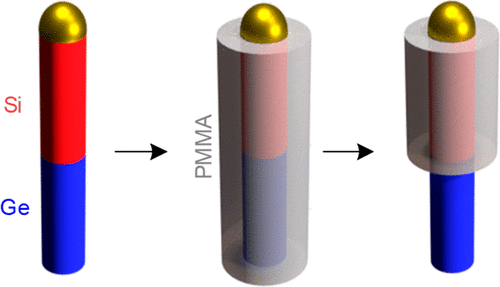
GEODE Towards massive throughputs of nanowires
We introduce and demonstrate critical steps toward the Geode process for the bottom-up synthesis of semiconductor nanowires. Central to the process is the design and fabrication of an unconventional, high surface area substrate: the interior surface of hollow silica microcapsules, assembled from silica particles via emulsion templating, and featuring porous walls to enable efficient gas transport. The interior surface of these hollow silica microcapsules is decorated with gold nanoparticles that seed nanowire growth via the vapor− liquid−solid (VLS) mechanism. We demonstrate the production of the necessary microcapsules and show how microcapsule structure and stability upon drying are influenced by the type of silica particles and use of a particle cross-linking agent. Finally, we demonstrate the synthesis of crystalline Si nanowires in the microcapsule interior.
Active Team: Maritza Mujica, Gozde Tutuncuoglu, Pralav P. Shetty, Amar T. Mohabir, Eric V. Woods, Victor Breedveld, Sven H. Behrens, Michael A. Filler
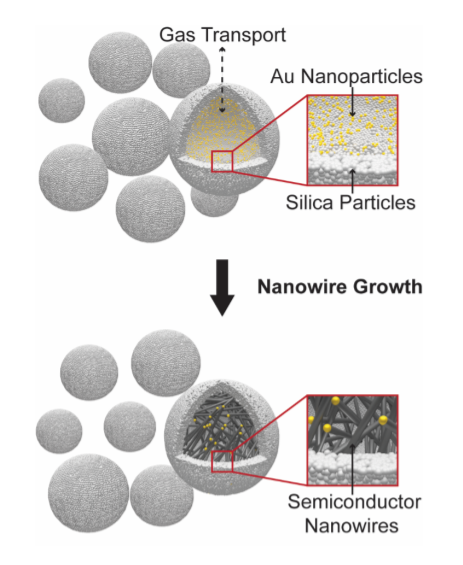
Winged Self-sustainable retrofittable intelligent systems
We investigate the challenges of designing self-sustainable, easy-to-install computational systems for all kinds of transportation modes. As a first step, we examine opportunities for harvesting energy in and around an automobile, exploring wind, solar, vibration, and heat energy as harvesting sources. We then propose an approach to guide the choice of energy harvesting technique while considering the possible locations for placing sensing or display solutions. To prove this novel concept, we develop a wide variety of applications, including rear parking sensors, passenger monitors, seat belt monitors, and displays for pedestrians.
Active Team: Jung Wook Park, Dingtian Zhang, Tingyu Cheng, Mohit Gupta, Yuhui Zhao, Thad Starner, Gregory Abowd

Silver Tape Towards circuit fabrication on everyday objects
We propose Silver Tape, a simple yet novel fabrication technique to transfer inkjet-printed silver traces from paper onto versatile substrates, without time-/space- consuming processes such as screen printing or heat sintering. This allows users to quickly implement silver traces with a variety of properties by exploiting a wide range of substrates. For instance, high flexibility can be achieved with Scotch tape, high transparency with polydimethylsiloxane (PDMS), heat durability with Kapton polyimide tape, water solubility with 3M water-soluble tape, and beyond. Many of these properties are not achievable with conventional substrates that are used for inkjet-printing conductive traces. Specifically, our technique leverages the commonly undesired low adhesion property of the inkjet printing films and repurposes these films as temporary transfer media. We describe our fabrication methods with a library of materials we can utilize, evaluate the mechanical and electrical properties of the transferred traces, and conclude with several demonstrative applications. We believe Silver Tape enriches novel interactions for the ubiquitous computing domain, by enabling digital fabrication of electronics on versatile materials, surfaces, and shapes.
Active Team: Tingyu Cheng, Koya Narumi, Youngwook Do, Yang Zhang, Tung D. Ta, Takuya Sasatani, Eric Markvicka, Yoshihiro Kawahara, Lining Yao, Gregory D. Abowd, HyunJoo Oh

Previous Projects
Past COSMOS research projects.
Serpentine Deformable Sensor for Natural Input
We introduce Serpentine, a self-powered sensor that is a reversibly deformable cord capable of sensing a variety of natural human input. The material properties and structural design of Serpentine allow it to be flexible, twistable, stretchable and squeezable, enabling a broad variety of expressive input modalities. The sensor operates using the principle of Triboelectric Nanogenerators (TENG), which allows it to sense mechanical deformation without an external power source. The affordances of the cord suggest six natural interactions-Pluck, Twirl, Stretch, Pinch, Wiggle and Twist. Serpentine demonstrates the novel ability to simultaneously recognize these inputs through a single physical interface. A 12-participant user study illustrates 95.7% accuracy for a user-dependent recognition model using a realtime system and 92.17% for user-independent offline detection.
Active Team: Fereshteh Shahmiri, Anandghan Waghmare, Dingtian Zhang, Shivan Mittal
